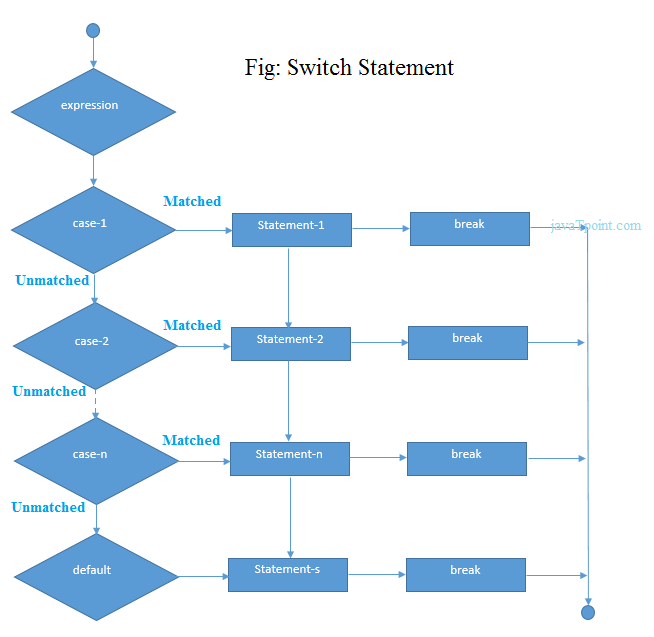Java Switch Statement
The Java switch statement executes one statement from multiple conditions. It is like if-else-if ladder statement.
Syntax:
- switch(expression){
- case value1:
-
- break;
- case value2:
-
- break;
- ......
-
- default:
- code to be executed if all cases are not matched;
- }

Example:
- public class SwitchExample {
- public static void main(String[] args) {
- int number=20;
- switch(number){
- case 10: System.out.println("10");break;
- case 20: System.out.println("20");break;
- case 30: System.out.println("30");break;
- default:System.out.println("Not in 10, 20 or 30");
- }
- }
- }
Output:
Java Switch Statement is fall-through
The java switch statement is fall-through. It means it executes all statement after first match if break statement is not used with switch cases.
Example:
- public class SwitchExample2 {
- public static void main(String[] args) {
- int number=20;
- switch(number){
- case 10: System.out.println("10");
- case 20: System.out.println("20");
- case 30: System.out.println("30");
- default:System.out.println("Not in 10, 20 or 30");
- }
- }
- }
Output:
20
30
Not in 10, 20 or 30

You have explained the concept very well. Appreciate your effort.
ReplyDeleteCheers,
http://www.flowerbrackets.com/switch-statement-java/
https://www.welookups.com/java/Java_Loop.htm
ReplyDelete